Bond Falls




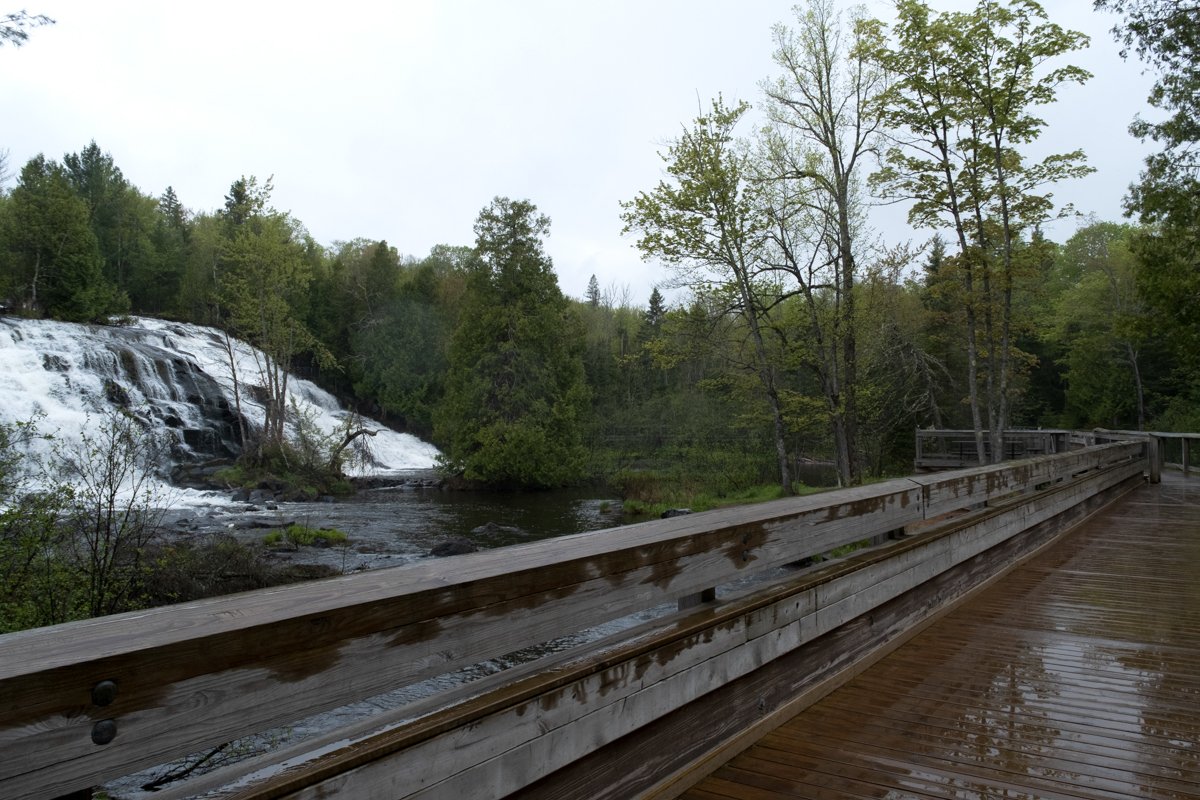
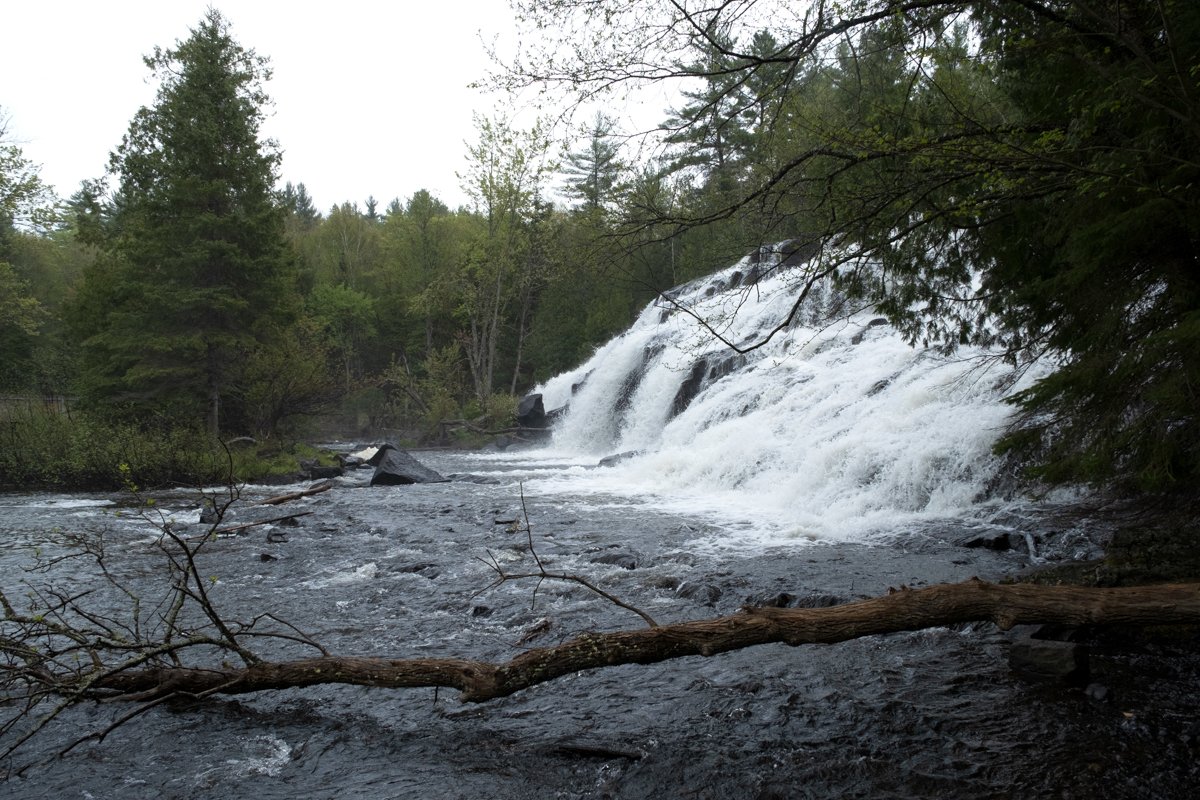
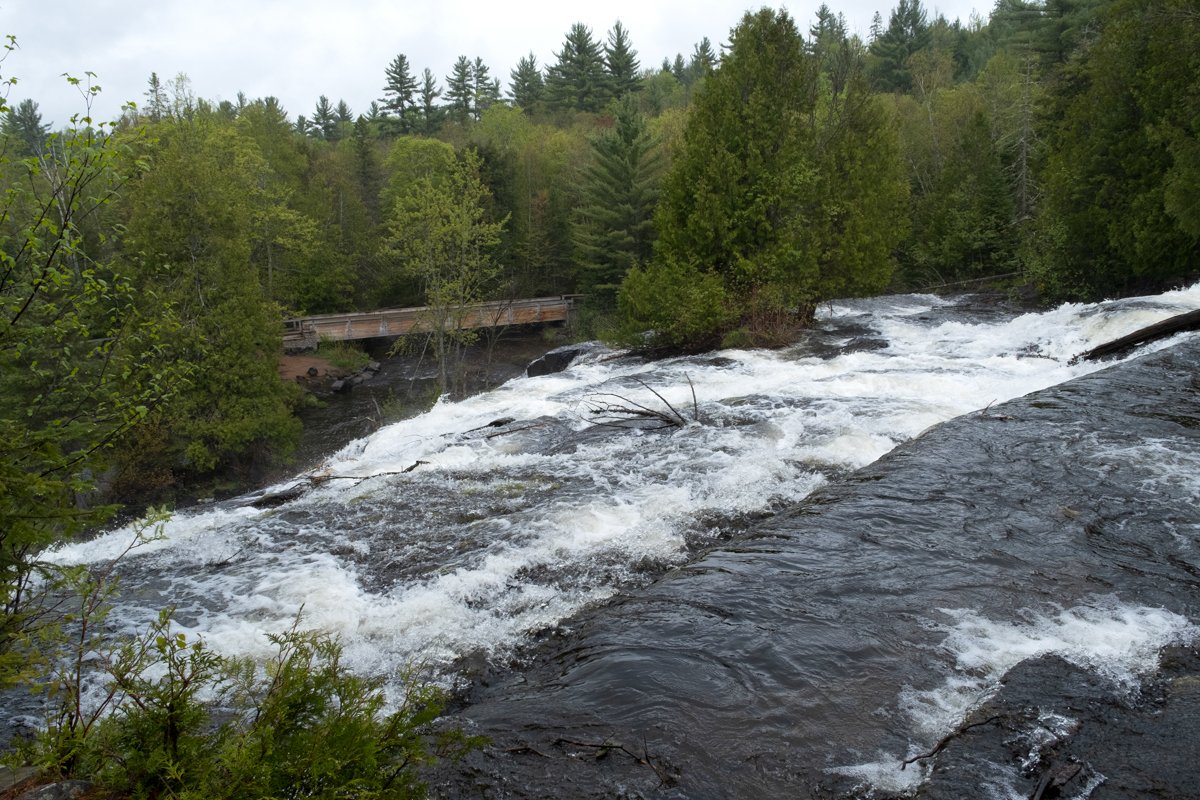
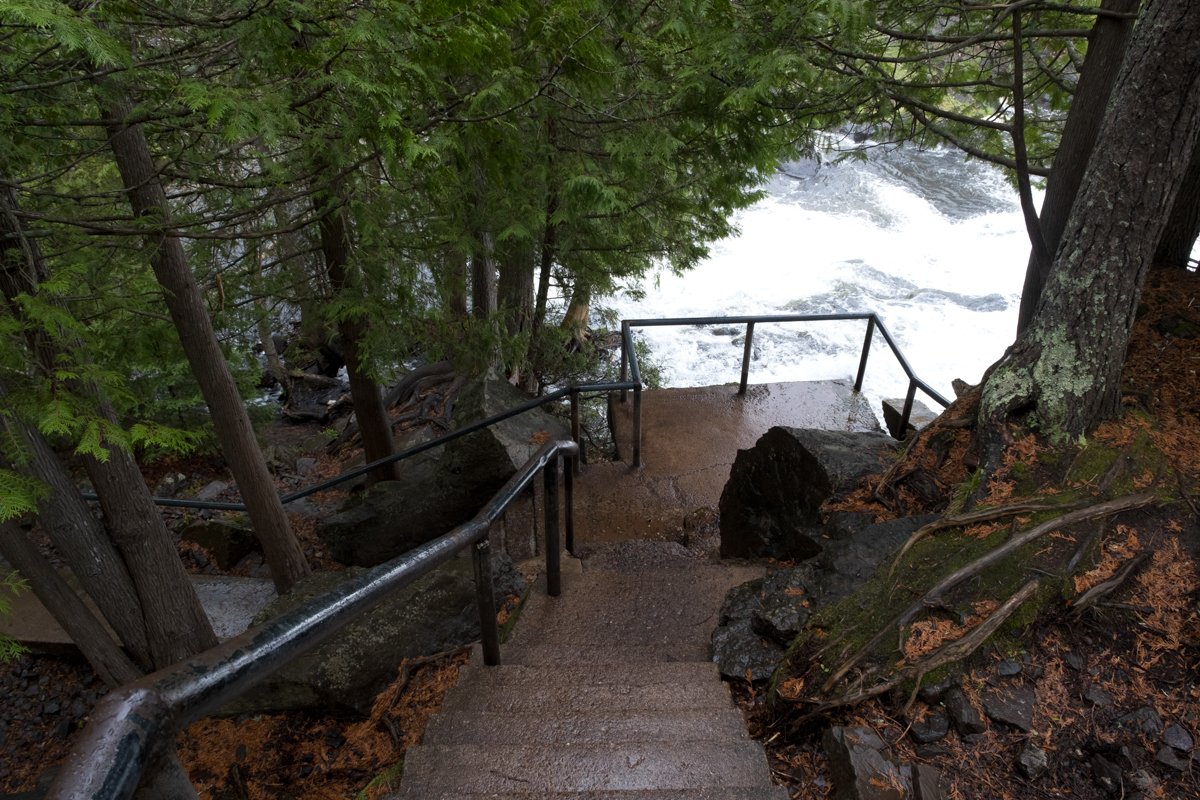
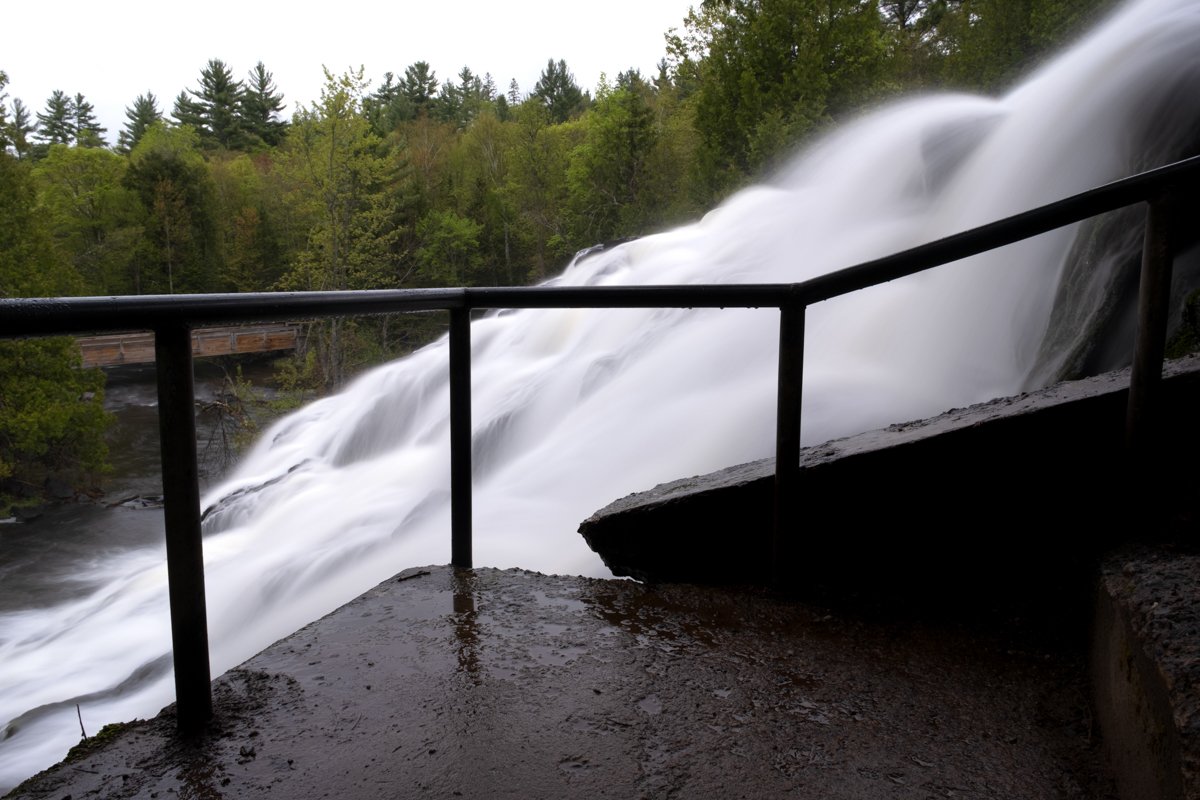


In my opinion, Bond Falls is the most majestic wheelchair-accessible waterfall in Michigan. Though you can’t go everywhere in a wheelchair, its wooden boardwalks give you a panoramic view of the tallest drop on the Middle Branch of the Ontonagon River. Agate Falls, located nearby, may be more triumphant, but it’s hard to beat the access you get at Bond Falls!
Though it may appear so, Bond Falls isn’t wholly natural. There’s a dam a short ways upstream, creating the Bond Falls Flowage, or reservoir. Though the waterfall is one of the most popular in the Upper Peninsula and is known for brook trout fishing above and below the dam, it didn’t always look exactly like this.
The first mention I’ve found of Bond Falls comes in the Detroit Free Press in 1931 in a piece by Florence Palmer. Then, there was no dam, just a river and a set of waterfalls. In late 1937, the Copper District Power Company built a dam on the Middle Branch of the Ontonagon River just above the falls, which diverted water to the South Branch to the company’s Victoria Dam. This caused the flow over Bond Falls to vary dramatically and consist of a trickle for a large portion of the year. At the time, the Detroit Free Press reported that a howl to save the falls had arisen.
The Copper District Power Company had approval from Ontonagon County to build the dam. Still, there was no water regulation agency on the state level, and Michigan owned the land below the falls. The argument was one of the first in the state about the public’s right to the land’s natural beauty, and state lawyers argued that the company owned the land but not the water, which was later held up. In January 1939, Thomas Reed became Michigan’s 41st Attorney General and took up the case. He struck a deal with Chairman Loutit of the Copper District Power Company that would allow 90 cubic feet of water per second to flow over falls during the daytime from June through Labor Day and 35 cubic feet per second for the rest of the year. This was significantly lower than the year-round average, but the public also received a perpetual easement to the falls and fishing rights on the river and reservoir.
Controversy continued into the 1940s, as conservationists and the power company argued about how much water should flow, with the Federal Power Commission eventually stepping in. One way or another, the dam continued to exist, the area around the falls was improved, and boardwalks were added below. Likely, if the land had been in the sole ownership of the state, there wouldn’t have been as much development at Bond Falls. By the late 1940s, the Copper District Power Company had become the Upper Peninsula Power Company, which still maintains the dam and falls today.
The parking area at Bond Falls will get crowded in the warmer months; however, for much of the year, you’ll likely be one of the only people visiting this scenic site. The walk to the falls is short and wheelchair accessible, and a wheelchair can also access the u-shaped boardwalks that offer panoramic views of the falls. A few other places have steps or steep inclines, such as the dirt trail up the east side of the falls and the stairs that rise steeply to the west. Elevating up alongside the water as it crashes into the basin below before flowing into the Middle Branch of the Ontonagon River is surreal, and the view from the top is powerful.
Multiple campsites are on the shores of the Bond Falls Flowage, offering quick access to the falls in the morning before tourists arrive. There’s a tourist shop near the dam, which is open seasonally. In addition to the falls, the dam is worth checking out, too. Bond Falls is one of the Midwest’s most magnificent destinations for rugged and raw natural beauty. Still, the dam nearby is an excellent example of how humans can tamper with nature and why that should always cause controversy.
